Magnepan 3.7i planar magnetic/ribbon and DWM woofer loudspeaker system
- REVIEW
- Chris Martens
- Oct 03, 2014
Founded in 1969, Magnepan is a Minnesota-based maker of critically acclaimed, high value dipole loudspeakers that are based upon planar magnetic and ribbon-type drivers (technical areas where company founder Jim Winey holds a number of core patents). Although Jim Winey retired some years ago, Magnepan is today lead by his son, Mark Winey, who works in concert with veteran marketing manager Wendell Diller to continue research and development efforts that help the company maintain (and extend) its technological edge. Not surprisingly, Magnepan loudspeakers continue to get better over time.
In recent years Magnepan research has led to a revamp of the firm’s entire product line, resulting in the introduction of a number of new models along with substantial revisions to acknowledged classics. For this review, we will focus on one of Magnepan’s most recently updated designs: the next-to-the-top-of the line 3.7i ($5,995 or £6,500 per pair). In passing, we will also take a look at the firm’s optional DWM planar magnetic woofers ($795 or £950 each), since we can envision applications where 3.7i owners might need or want to add one or two DWMs to their systems in order to tap their full performance potential.
Magnepan’s 3.7i is a roughly 6-foot tall, 2-foot wide, and 1.625-inch thick hybrid planar magnetic/ribbon driver-equipped, dipole loudspeaker. The perimeter frame of the speaker is CNC milled from a slab of MDF material, with large, elongated, rectangular openings for the planar magnetic and ribbon drivers, plus a small opening toward the bottom where the crossover network and speaker terminal panel are housed. Once assembled and tested, the entire speaker is wrapped in sonically transparent grille fabric, trimmed with either wood or aluminium accent panels, and then shipped with beefy pairs of bolt-on steel feet (each shaped like an inverted letter ‘T’, when viewed from the side).
Magnepan ก่อตั้งขึ้นในปี 1969 เป็นผู้ผลิตลำโพงไดโพลคุณภาพสูงที่ได้รับการยกย่องจากนักวิจารณ์และมีฐานอยู่ในรัฐมินนิโซตา โดยใช้ไดรเวอร์แม่เหล็กแบบแบนและแบบริบบิ้น (ซึ่งเป็นสาขาเทคนิคที่ Jim Winey ผู้ก่อตั้งบริษัทถือครองสิทธิบัตรหลักหลายฉบับ) แม้ว่า Jim Winey จะเกษียณอายุไปแล้วเมื่อหลายปีก่อน แต่ปัจจุบัน Magnepan นำโดย Mark Winey ลูกชายของเขา ซึ่งทำงานร่วมกับ Wendell Diller ผู้จัดการฝ่ายการตลาดผู้มากประสบการณ์ เพื่อสานต่อความพยายามในการวิจัยและพัฒนาที่ช่วยให้บริษัทรักษา (และขยาย) ความได้เปรียบทางเทคโนโลยีไว้ได้ ไม่น่าแปลกใจเลยที่ลำโพงของ Magnepan ยังคงมีการพัฒนาอย่างต่อเนื่องตลอดเวลา
ในช่วงไม่กี่ปีที่ผ่านมา การวิจัยของ Magnepan นำไปสู่การปฏิรูปสายผลิตภัณฑ์ทั้งหมดของบริษัท ส่งผลให้มีการเปิดตัวรุ่นใหม่หลายรุ่นพร้อมกับการปรับปรุงครั้งใหญ่ให้กับรุ่นคลาสสิกที่ได้รับการยอมรับ สำหรับบทวิจารณ์นี้ เราจะเน้นที่หนึ่งในดีไซน์ที่ได้รับการปรับปรุงล่าสุดของ Magnepan นั่นก็คือ 3.7i ซึ่งเป็นรุ่นท็อปสุด ($5,995 หรือ 6,500 ปอนด์ต่อคู่) นอกจากนี้ เราจะพิจารณาวูฟเฟอร์แม่เหล็กแบบแบน DWM เสริมของบริษัท ($795 หรือ 950 ปอนด์ต่อตัว) เนื่องจากเราสามารถจินตนาการถึงการใช้งานที่เจ้าของ 3.7i อาจต้องการหรืออยากเพิ่ม DWM หนึ่งหรือสองตัวลงในระบบของตนเพื่อดึงศักยภาพประสิทธิภาพออกมาให้เต็มที่
ลำโพง 3.7i ของ Magnepan เป็นลำโพงไดโพลไฮบริดแบบแม่เหล็กระนาบ/ริบบิ้นที่มีความสูงประมาณ 6 ฟุต กว้าง 2 ฟุต และหนา 1.625 นิ้ว โครงรอบนอกของลำโพงถูกกลึงด้วยเครื่อง CNC จากแผ่นวัสดุ MDF โดยมีช่องเปิดขนาดใหญ่ยาวเป็นรูปสี่เหลี่ยมผืนผ้าสำหรับไดรเวอร์แม่เหล็กระนาบและริบบิ้น รวมถึงช่องเปิดขนาดเล็กที่ด้านล่างซึ่งเป็นที่อยู่ของเครือข่ายครอสโอเวอร์และแผงขั้วต่อลำโพง เมื่อประกอบและทดสอบแล้ว ลำโพงทั้งหมดจะถูกหุ้มด้วยผ้าตะแกรงที่โปร่งแสงเพื่อเสียง ตกแต่งด้วยแผงไม้หรืออลูมิเนียม จากนั้นจึงจัดส่งพร้อมขาเหล็กคู่ใหญ่ที่ยึดด้วยสลักเกลียว (เมื่อมองจากด้านข้าง ขาแต่ละข้างจะมีรูปร่างเหมือนตัวอักษร ‘T’ กลับหัว)

The heart of the 3.7i is its sizable quasi-ribbon-type planar magnetic bass/midrange driver, which consists of a sturdy perforated metal screen in the rear, arrays of precisely spaced vertical bar magnets affixed to the front of the screen, and a very thin Mylar diaphragm suspended in front of the magnet array. Bonded to the diaphragm is an elongated, serpentine ‘voice coil’ made of thin, light, ribbon-like aluminium conductor strips covering nearly the entire surface of the diaphragm. As audio signals pass through the conductors, the diaphragm membrane is attracted to or repelled from the magnet array, thus producing sound. The one-piece driver panel is internally divided into side-by-side bass and midrange sections, each optimised for its respective frequency range. Magnepan uses various proprietary techniques to control unwanted resonance both in the driver diaphragm and in the perforated screen/magnet assembly.
Adjacent to the bass/midrange panel is Magnepan’s signature ribbon tweeter—the same one used in the flagship 20.7 loudspeaker. Unlike the compact ribbon tweeters sometimes used in piston-type loudspeakers, Magnepan’s ribbon tweeter features an ultra-thin aluminium foil ribbon approximately ¼-inch wide and five feet long. Many audiophiles regard this tweeter as one of the finest high-frequency transducers in the world and I count myself in that group; it offers smooth and beautifully extended highs and astonishingly quick and nuanced handling of treble transients and textures.
Magnepan offers few details on the crossover of the 3.7i, but on the basis of talks with Winey and Diller I gather a time/phase coherent network is used. The rear panel of the speaker is interesting, too, because it provides not only the expected ‘+/-‘ speaker terminals, but also two sets of connection points where, at the user’s option, midrange and tweeter loading resistors (included) or bypass jumpers can be installed. In this way, Magnepan enables users to trim the speaker’s midrange and treble output to best match the acoustics of their rooms.
ทวีตเตอร์ริบบอนอันเป็นเอกลักษณ์ของ Magnepan อยู่ติดกับแผงเบส/เสียงกลาง ซึ่งเป็นทวีตเตอร์แบบเดียวกับที่ใช้ในลำโพงเรือธง 20.7 ซึ่งแตกต่างจากทวีตเตอร์ริบบอนขนาดกะทัดรัดที่ใช้ในลำโพงแบบลูกสูบ ทวีตเตอร์ริบบอนของ Magnepan มีริบบิ้นฟอยล์อะลูมิเนียมบางเฉียบกว้างประมาณ ¼ นิ้วและยาว 5 ฟุต ผู้ที่ชื่นชอบเสียงหลายคนมองว่าทวีตเตอร์นี้เป็นหนึ่งในตัวแปลงความถี่สูงที่ดีที่สุดในโลก และฉันก็จัดตัวเองอยู่ในกลุ่มนั้นด้วย ทวีตเตอร์นี้ให้เสียงสูงที่นุ่มนวลและขยายได้อย่างสวยงาม และการจัดการเสียงแหลมชั่วคราวและเนื้อสัมผัสที่รวดเร็วและละเอียดอ่อนอย่างน่าทึ่ง
หัวใจสำคัญของ 3.7i คือไดรเวอร์เบส/มิดเรนจ์แบบแม่เหล็กระนาบขนาดใหญ่ที่มีลักษณะคล้ายริบบิ้น ซึ่งประกอบด้วยแผ่นโลหะเจาะรูที่แข็งแรงด้านหลัง แม่เหล็กแท่งแนวตั้งที่ติดไว้ด้านหน้าหน้าจอและไดอะเฟรมไมลาร์ที่บางมากซึ่งแขวนอยู่ด้านหน้าของอาร์เรย์แม่เหล็ก ไดอะเฟรมมี “คอยล์เสียง” ที่ยาวและโค้งงอคล้ายงูซึ่งทำจากแถบตัวนำอะลูมิเนียมบางและเบาคล้ายริบบิ้นซึ่งครอบคลุมพื้นผิวของไดอะเฟรมเกือบทั้งหมด เมื่อสัญญาณเสียงผ่านตัวนำ เมมเบรนของไดอะเฟรมจะถูกดึงดูดหรือผลักออกจากอาร์เรย์แม่เหล็ก จึงทำให้เกิดเสียงขึ้น แผงไดรเวอร์แบบชิ้นเดียวภายในแบ่งออกเป็นส่วนเบสและมิดเรนจ์แบบเคียงข้างกัน โดยแต่ละส่วนได้รับการปรับให้เหมาะสมสำหรับช่วงความถี่ที่เกี่ยวข้อง Magnepan ใช้เทคนิคเฉพาะต่างๆ เพื่อควบคุมเสียงสะท้อนที่ไม่ต้องการทั้งในไดอะเฟรมไดรเวอร์และในชุดประกอบแผ่นโลหะเจาะรู/แม่เหล็ก
Magnepan นำเสนอรายละเอียดเพียงเล็กน้อยเกี่ยวกับครอสโอเวอร์ของ 3.7i แต่จากการพูดคุยกับ Winey และ Diller ฉันได้ข้อสรุปว่ามีการใช้เครือข่ายที่สอดคล้องกันระหว่างเวลาและเฟส แผงด้านหลังของลำโพงก็น่าสนใจเช่นกัน เนื่องจากไม่เพียงแต่มีขั้วต่อลำโพงแบบ ‘+/-‘ ตามที่คาดไว้เท่านั้น แต่ยังมีจุดเชื่อมต่อสองชุดที่ผู้ใช้สามารถติดตั้งตัวต้านทานโหลดเสียงกลางและทวีตเตอร์ (รวมอยู่ด้วย) หรือจัมเปอร์บายพาสได้ตามต้องการ ด้วยวิธีนี้ Magnepan จึงช่วยให้ผู้ใช้สามารถปรับเอาต์พุตเสียงกลางและเสียงแหลมของลำโพงให้เข้ากับเสียงในห้องได้ดีที่สุด
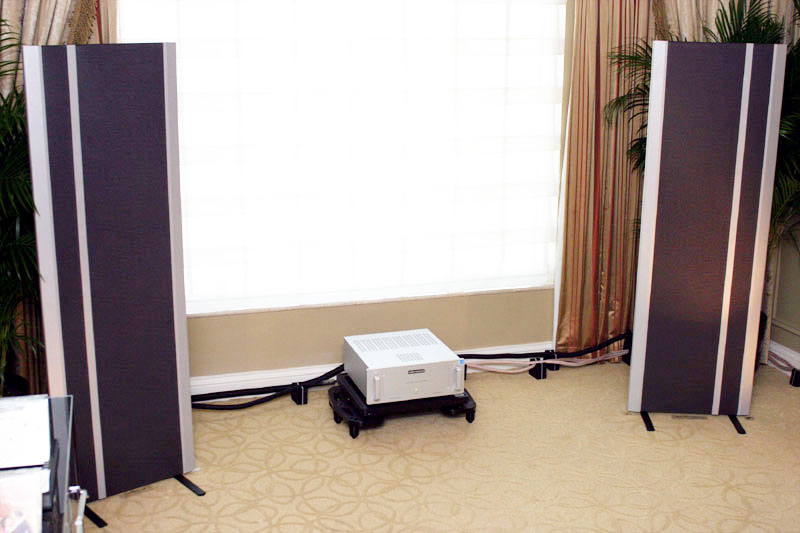
3.7i’s are supplied as a mirror-image pair, which gives listeners the option to orient the speakers with the tweeters positioned inwards or outwards. Magnepan says the former arrangement yields tighter and more precisely focused imaging, while the latter produces wider, deeper, and more spacious soundstages. Rather than going by those rules of thumb, however, I would suggest that owners try both orientations, since in my practical experience it often happens that one arrangement or the other will yield markedly superior results in any given room.
What makes the 3.7i different from the 3.7? Frustratingly, Magnepan has declined to discuss the specific technical changes made, arguing instead that the best way to evaluate the changes is not by reading a technical paper, but rather by listening to the speaker in action and then drawing one’s own conclusions. (Actually, Magnepan did share some details on the 3.7-to-3.7i upgrade, but only on the condition that I not publish them; I could tell you, but I’d have to kill you – and myself – afterward). Like many, I would like to have complete information on the changes, but I can also respect Magnepan’s contention that meaningful assessments should be based, first and foremost, on careful, critical listening.
In daily use, the 3.7i offers a number of compelling sonic virtues, some of which are carried forward from the already excellent 3.7 and some that are distinctive to the 3.7i. Let’s begin by reviewing some of the speaker’s acknowledged strengths.
Like its predecessor, the 3.7i is one of relatively few dipole speakers to offer legitimate, near full-range frequency response, with bass extending (at least in some rooms) down into the mid-30Hz region and with highs reaching upward beyond audibility. In contrast, many would-be full-range dipoles turn out not to deliver the bass power and depth the 3.7i has on offer (e.g., Quad electrostatic designs) or alternatively wind up being huge and expensive (e.g., the superb but very large Sound Lab electrostatic designs). The 3.7i, on the other hand, stands as a well-balanced and well-rounded ‘do-all’ speaker—one that offers an elusive mix of sonic detail, transparency, wide-range frequency response, and freedom from box-speaker colourations—all at a reasonable price.

To experience what I mean by the terms sweep, flow, and scale, try listening to Revueltas’ Sensemayá as captured on Chicago Symphony Orchestra Brass Live [CSO-Resound, SACD], which presents a big, powerful, hall-filling sound as appropriate to the material at hand. Through many speakers, the soundstage on this track can become truncated to the point where it simply seems too small to do justice to the composition. Through the 3.7i, however, the soundstages expand to fit the requirements of the music – faithfully conveying the sense of listening in a large, acoustically correct orchestra hall. In short, the 3.7i routinely transports listeners to large, expansive, and quite believable sound spaces – where not many competing speakers can take you.
Third, like other Magnepans before it, the 3.7i demonstrates uncanny qualities of coherence and cut-from-whole-cloth sonic integrity—qualities that become particularly apparent when listing to instruments whose voices span several octaves in range. As pitches rise and fall, from the highest notes you can hear all the way down to the lowest notes the speaker can reproduce, there is never any sense of transitioning from one disparate type of driver to another. I think this is directly attributable to the fact that the 3.7i drivers are not only well-matched in terms of voicing, but also offer identical dipolar radiation patterns. As a result, there is never any sense of disparate driver types loading the room in fundamentally different ways, causing subtle sonic discontinuities in the process.
ลำโพง 3.7i มีให้เลือกเป็นคู่แบบกระจกสะท้อนภาพ ซึ่งทำให้ผู้ฟังสามารถเลือกวางลำโพงโดยให้ทวีตเตอร์วางเข้าด้านในหรือด้านนอกได้ Magnepan กล่าวว่าการจัดวางลำโพงแบบแรกให้ภาพที่ชัดและโฟกัสได้แม่นยำกว่า ในขณะที่การจัดวางลำโพงแบบหลังให้เวทีเสียงที่กว้างขึ้น ลึกขึ้น และกว้างขวางขึ้น อย่างไรก็ตาม แทนที่จะยึดตามกฎเกณฑ์เหล่านี้ ฉันขอแนะนำให้เจ้าของลำโพงลองจัดวางทั้งสองแบบ เนื่องจากจากประสบการณ์จริงของฉัน การจัดวางแบบใดแบบหนึ่งมักจะให้ผลลัพธ์ที่ดีกว่าอย่างเห็นได้ชัดในห้องใดก็ตาม
อะไรทำให้ 3.7i แตกต่างจาก 3.7? น่าผิดหวังที่ Magnepan ปฏิเสธที่จะพูดถึงการเปลี่ยนแปลงทางเทคนิคที่เกิดขึ้น โดยให้เหตุผลว่าวิธีที่ดีที่สุดในการประเมินการเปลี่ยนแปลงไม่ใช่การอ่านเอกสารทางเทคนิค แต่เป็นการฟังผู้บรรยายดำเนินการแล้วสรุปผลเอง (จริงๆ แล้ว Magnepan ได้แบ่งปันรายละเอียดบางส่วนเกี่ยวกับการอัปเกรดจาก 3.7 เป็น 3.7i แต่มีเงื่อนไขว่าฉันจะไม่เผยแพร่รายละเอียดเหล่านั้น ฉันสามารถบอกคุณได้ แต่ฉันคงต้องฆ่าคุณและฆ่าตัวเองในภายหลัง) เช่นเดียวกับหลายๆ คน ฉันต้องการข้อมูลที่สมบูรณ์เกี่ยวกับการเปลี่ยนแปลงเหล่านี้ แต่ฉันก็เคารพข้อโต้แย้งของ Magnepan ที่ว่าการประเมินที่มีความหมายควรขึ้นอยู่กับการฟังอย่างรอบคอบและวิพากษ์วิจารณ์ก่อนเป็นอันดับแรก
ในการใช้งานประจำวัน ลำโพง 3.7i มีคุณสมบัติเด่นหลายประการในด้านเสียง ซึ่งบางส่วนสืบทอดมาจากลำโพง 3.7 ที่ยอดเยี่ยมอยู่แล้ว และบางส่วนก็มีเอกลักษณ์เฉพาะตัวจากลำโพง 3.7i เริ่มต้นด้วยการทบทวนจุดแข็งบางประการที่เป็นที่ยอมรับของลำโพงรุ่นนี้
เช่นเดียวกับรุ่นก่อนหน้า ลำโพงไดโพล 3.7i เป็นลำโพงไดโพลเพียงไม่กี่รุ่นเท่านั้นที่ตอบสนองความถี่ได้เกือบเต็มช่วงเสียง โดยเสียงเบสจะแผ่ลงมา (อย่างน้อยก็ในบางห้อง) ลงมาที่ช่วงความถี่กลาง 30 เฮิรตซ์ และมีเสียงสูงที่ดังเกินระดับที่เสียงจะได้ยิน ในทางกลับกัน ลำโพงไดโพลแบบฟูลช่วงเสียงหลายรุ่นกลับไม่สามารถส่งพลังเสียงเบสและความลึกได้เท่ากับลำโพง 3.7i (เช่น ลำโพงแบบอิเล็กโทรสแตติก Quad) หรือในทางกลับกัน ลำโพงเหล่านี้กลับมีขนาดใหญ่และมีราคาแพง (เช่น ลำโพงแบบอิเล็กโทรสแตติก Sound Lab ที่ยอดเยี่ยมแต่มีขนาดใหญ่) ในทางกลับกัน ลำโพง 3.7i เป็นลำโพงที่สมดุลและครอบคลุมทุกด้าน ซึ่งให้รายละเอียดเสียงที่คลุมเครือ ความโปร่งใส ตอบสนองความถี่ได้หลากหลายช่วงเสียง และปราศจากสีสันของลำโพงแบบกล่อง ทั้งหมดนี้มีราคาสมเหตุสมผล
ถัดมา 3.7i เช่นเดียวกับ 3.7 รุ่นก่อนหน้า ให้เวทีเสียงที่กว้างและลึกอย่างไม่ธรรมดา ซึ่งขยายในมิติแนวตั้งเพื่อให้ได้ระดับความสมจริงที่เหนือชั้น ลักษณะที่น่าพึงพอใจอย่างหนึ่งของดนตรีสดคือความรู้สึกของคลื่นเสียงที่พุ่งขึ้นและผ่านตัวคุณไปจนเต็มพื้นที่ ซึ่งเป็นความรู้สึกที่ลำโพงแบบลูกสูบหลายๆ รุ่นทำได้ยาก ในทางกลับกัน เป็นเรื่องง่ายที่ 3.7i สูงเกือบ 6 ฟุตจะสร้างความรู้สึกของความสูงของเวทีเสียงขึ้นมาใหม่ได้ โดยในกระบวนการนี้จะสามารถเก็บกวาด ไหลลื่น และสเกลอันยอดเยี่ยมของดนตรีสดได้เป็นส่วนใหญ่
หากต้องการสัมผัสกับความหมายของคำว่า sweep, flow และ scale ลองฟัง Sensemayá ของ Revueltas ที่บันทึกในChicago Symphony Orchestra Brass Live [CSO-Resound, SACD] ซึ่งนำเสนอเสียงที่ดัง ทรงพลัง และเต็มอิ่มไปด้วยเสียงในฮอลล์ตามความเหมาะสมกับเนื้อหาที่เล่น เมื่อใช้ลำโพงหลายตัว เวทีเสียงในแทร็กนี้อาจถูกตัดทอนจนดูเล็กเกินไปจนไม่สามารถถ่ายทอดองค์ประกอบของเพลงได้อย่างเต็มที่ อย่างไรก็ตาม เมื่อใช้ 3.7i เวทีเสียงจะขยายออกเพื่อให้เหมาะกับความต้องการของเพลง ซึ่งถ่ายทอดความรู้สึกเหมือนกำลังฟังอยู่ในฮอลล์ออเคสตราขนาดใหญ่ที่ถูกต้องตามหลักเสียงได้อย่างแท้จริง กล่าวโดยสรุป 3.7i มักจะพาผู้ฟังไปสู่พื้นที่เสียงที่กว้างขวาง กว้างขวาง และน่าเชื่อถือ ซึ่งลำโพงคู่แข่งไม่กี่ตัวสามารถพาคุณไปได้
ประการที่สาม เช่นเดียวกับ Magnepans อื่นๆ ก่อนหน้านี้ 3.7i แสดงให้เห็นถึงคุณสมบัติที่แปลกประหลาดของความสอดคล้องและความสมบูรณ์ของเสียงที่ตัดจากผ้าทั้งผืน คุณสมบัติดังกล่าวจะชัดเจนเป็นพิเศษเมื่อฟังเครื่องดนตรีที่มีเสียงครอบคลุมหลายช่วงอ็อกเทฟ เมื่อระดับเสียงสูงขึ้นและต่ำลง จากโน้ตสูงสุดที่คุณได้ยินลงไปจนถึงโน้ตต่ำสุดที่ลำโพงสามารถเล่นได้ จะไม่มีความรู้สึกว่ามีการเปลี่ยนจากไดรเวอร์ประเภทหนึ่งที่แตกต่างกันไปเป็นอีกประเภทหนึ่งเลย ฉันคิดว่านี่เป็นเพราะไดรเวอร์ 3.7i ไม่เพียงแต่มีการจับคู่กันได้ดีในแง่ของเสียงเท่านั้น แต่ยังมีรูปแบบการแผ่รังสีแบบไดโพลาร์ที่เหมือนกันอีกด้วย ดังนั้น จึงไม่มีความรู้สึกว่ามีไดรเวอร์ประเภทต่างๆ ที่แตกต่างกันทำให้ห้องโหลดในลักษณะที่แตกต่างกันโดยพื้นฐาน ทำให้เกิดความไม่ต่อเนื่องของเสียงที่ละเอียดอ่อนในกระบวนการนี้

As I listened carefully to the 3.7i, my assessment was that it not only preserved but actually expanded upon the 3.7’s overall coherency. If you heard the original 3.7 in isolation you would rightly think it to be a very fine loudspeaker, but if you then switched to the 3.7i you would soon realise that, from the heart of the midrange and on up into the upper midrange, the new speaker sounds noticeably smoother and more at ease with itself. Moreover, levels of internal ‘self-noise’ seem to be reduced in the 3.7i, so that backgrounds become quieter, making it easier for low-level details to be revealed.
To hear these qualities in action, listen to the track ‘Big Brother’ from Jen Chapin’s reVisions [Chesky SACD], which is a brilliant jazz trio’s update on a selection of classic songs from Stevie Wonder. Listen, for example, to the feisty, provocative edge in Chapin’s voice as she sings a line accusing politicians of only visiting their constituents “…around election time.” The 3.7i’s really bring Chapin’s voice, with its many tonal colours, emotional moods, and engaging inflections, vividly to life. Note, too, the fascinating passage near the end of the song where saxophonist Chris Cheek takes a walk from the front left side of the stage to the rear as he continues to play. As Cheek turns and moves, the Magnepans capture small spatial details that help you know where Cheek is standing and which way he is facing as he moves. While many speakers do a good job with this track, the 3.7i does a great one.
The 3.7i also differs from the original 3.7 by offering noticeably more expressive and expansive dynamics. The 3.7i, like most Magnepan speakers, is relatively power hungry and low in rated sensitivity, but give the speaker the power it needs and it will respond with impressive energy and grace—areas where the 3.7i clearly outperforms the original 3.7. When pushed hard by challenging musical material the earlier speaker could eventually start to exhibit faint traces of strain in the form of a subtle, hard-edged or even ragged-sounding quality. In contrast, when you lean hard on the 3.7i it simply plays more loudly, always maintaining a smooth-tempered sonic disposition.
To appreciate what I mean, listen to John Adler’s Confronting Inertia [Origin Classical], where Adler explores both the pensive and more fiercely forceful voices of his trumpet. On the more delicate end of the dynamic spectrum the 3.7i captures the subtleties of Adler’s horn with admirable finesse, but as Adler probes the other end of the dynamic envelope the 3.7i answers with its own unflustered yet decidedly muscular response—delivering acoustic power tempered with an easy-going kind of grace. I won’t tell you the 3.7i can compete with horn-type speakers in terms of dynamic clout because that would be ridiculous, but I will tell you that it produces a much bigger, more forceful, and yet more relaxed presentation than the 3.7 did.
Good though the 3.7 was and is, there is something audibly and inarguably more ‘right’ about the new 3.7i. Interestingly, from a musical perspective, the new design at once sounds more revealing of low-level textures and details, yet also smoother and less prone to edginess (a package of virtues that don’t often travel together in most speakers).
Are there any caveats? There are a few, but none of them major. First, the 3.7i requires an amplifier that offers substantial power output and the ability to deliver current into low impedance (4 Ohm) loads. Second, the Maggies need room in which to operate, as they should be positioned several feet out from the rear walls of listener’s rooms. For this reason, the 3.7i would not be ideal for smaller spaces. Third, note that the 3.7i’s low-end response will be adequate in many spaces, but not in all. Should your room prove problematic in this way, note that Magnepan’s optional DWM woofer panels (see the sidebar below) can work wonders. Finally, be aware that the 3.7i typically does not produce the pinpoint-precise images or razor-sharp sense of focus one might enjoy from speakers such as the excellent (but far more costly) Raidho D-1 monitors.
ขณะที่ผมฟัง 3.7i อย่างตั้งใจ ผมประเมินว่าลำโพงรุ่นนี้ไม่เพียงแต่รักษาความสอดคล้องโดยรวมของ 3.7 ไว้เท่านั้น แต่ยังขยายความสอดคล้องโดยรวมของ 3.7 อีกด้วย หากคุณฟัง 3.7 รุ่นเดิมแบบแยกเสียง คุณคงคิดว่ามันเป็นลำโพงที่ดีมาก แต่ถ้าคุณเปลี่ยนมาใช้ 3.7i คุณจะรู้ในไม่ช้าว่าตั้งแต่ใจกลางย่านกลางไปจนถึงย่านกลางสูง ลำโพงรุ่นใหม่นี้ให้เสียงที่นุ่มนวลขึ้นอย่างเห็นได้ชัดและรู้สึกผ่อนคลายมากขึ้น นอกจากนี้ ระดับของ “เสียงรบกวนภายใน” ใน 3.7i ดูเหมือนจะลดลง ทำให้พื้นหลังเงียบลง ทำให้เปิดเผยรายละเอียดในระดับต่ำได้ง่ายขึ้น
หากต้องการฟังคุณสมบัติเหล่านี้ ให้ฟังเพลง ‘Big Brother’ จากreVisions [Chesky SACD] ของ Jen Chapin ซึ่งเป็นเพลงแจ๊สสามชิ้นที่ยอดเยี่ยมที่นำเพลงคลาสสิกของ Stevie Wonder มาปรับปรุงใหม่ ลองฟังเสียงที่แหลมคมและท้าทายของ Chapin ขณะที่เธอร้องท่อนที่กล่าวหาว่านักการเมืองมาเยี่ยมประชาชนในเขตเลือกตั้งของตนเฉพาะ “…ช่วงเลือกตั้ง” 3.7i ทำให้เสียงของ Chapin มีชีวิตชีวาอย่างแท้จริงด้วยสีสันที่หลากหลาย อารมณ์ความรู้สึก และการเน้นเสียงที่น่าดึงดูด นอกจากนี้ โปรดสังเกตท่อนที่น่าสนใจใกล้จบเพลงที่นักแซกโซโฟน Chris Cheek เดินจากด้านซ้ายด้านหน้าของเวทีไปด้านหลังในขณะที่เขายังคงเล่นต่อไป ขณะที่ Cheek หันตัวและเคลื่อนไหว Magnepans จะจับรายละเอียดเชิงพื้นที่เล็กๆ น้อยๆ ที่ช่วยให้คุณทราบว่า Cheek ยืนอยู่ตรงไหนและหันหน้าไปทางไหนขณะที่เขาเคลื่อนไหว แม้ว่าลำโพงหลายตัวจะทำงานได้ดีกับแทร็คนี้ แต่ 3.7i ก็ทำได้ดีเยี่ยมเช่นกัน
นอกจากนี้ 3.7i ยังแตกต่างจาก 3.7 รุ่นเดิมด้วยการให้ไดนามิกที่แสดงออกและขยายได้ชัดเจนขึ้น 3.7i เช่นเดียวกับลำโพง Magnepan ส่วนใหญ่กินพลังงานค่อนข้างมากและมีความไวต่อการตอบสนองต่ำ แต่ให้พลังงานที่จำเป็นแก่ลำโพงและตอบสนองด้วยพลังงานและความสง่างามที่น่าประทับใจ ซึ่งเป็นจุดที่ 3.7i เหนือกว่า 3.7 รุ่นเดิมอย่างชัดเจน เมื่อถูกกดดันด้วยเนื้อหาดนตรีที่ท้าทาย ลำโพงรุ่นก่อนหน้าอาจเริ่มแสดงร่องรอยของความเครียดเล็กน้อยในรูปแบบของคุณภาพเสียงที่แหลม แหลม หรือแม้กระทั่งหยาบ ในทางกลับกัน เมื่อคุณใช้ 3.7i อย่างหนัก ลำโพงจะเล่นเสียงดังขึ้นโดยคงไว้ซึ่งลักษณะเสียงที่นุ่มนวลเสมอ
หากต้องการเข้าใจในสิ่งที่ฉันหมายถึง ให้ลองฟังConfronting Inertia [Origin Classical] ของ John Adler ซึ่ง Adler ได้สำรวจทั้งเสียงทรัมเป็ตที่ครุ่นคิดและทรงพลังยิ่งขึ้น ในด้านไดนามิกที่ละเอียดอ่อนกว่านั้น 3.7i สามารถจับความละเอียดอ่อนของแตรของ Adler ได้อย่างประณีตอย่างน่าชื่นชม แต่เมื่อ Adler เจาะลึกอีกด้านหนึ่งของเอนเวโลปไดนามิก 3.7i ก็ตอบสนองด้วยการตอบสนองที่ไม่สับสนแต่ทรงพลังอย่างชัดเจน โดยส่งพลังเสียงอะคูสติกที่ผสมผสานกับความสง่างามแบบสบายๆ ฉันจะไม่บอกคุณว่า 3.7i สามารถแข่งขันกับลำโพงประเภทแตรได้ในแง่ของพลังไดนามิก เพราะนั่นจะดูไร้สาระ แต่ฉันจะบอกคุณว่ามันให้การนำเสนอที่ใหญ่กว่า ทรงพลังกว่า และผ่อนคลายกว่า 3.7 มาก
แม้ว่า 3.7 จะดีและเป็นอยู่ แต่ 3.7i ใหม่ก็มีบางอย่างที่ “ถูกต้อง” กว่าอย่างเห็นได้ชัดและไม่ต้องสงสัย ที่น่าสนใจคือ เมื่อมองจากมุมมองทางดนตรี การออกแบบใหม่นี้ให้เสียงที่เปิดเผยพื้นผิวและรายละเอียดในระดับต่ำมากขึ้น ในขณะเดียวกันก็นุ่มนวลขึ้นและมีแนวโน้มที่จะเกิดความแหลมคมน้อยลง (ซึ่งเป็นคุณสมบัติที่ไม่ค่อยพบในลำโพงส่วนใหญ่)
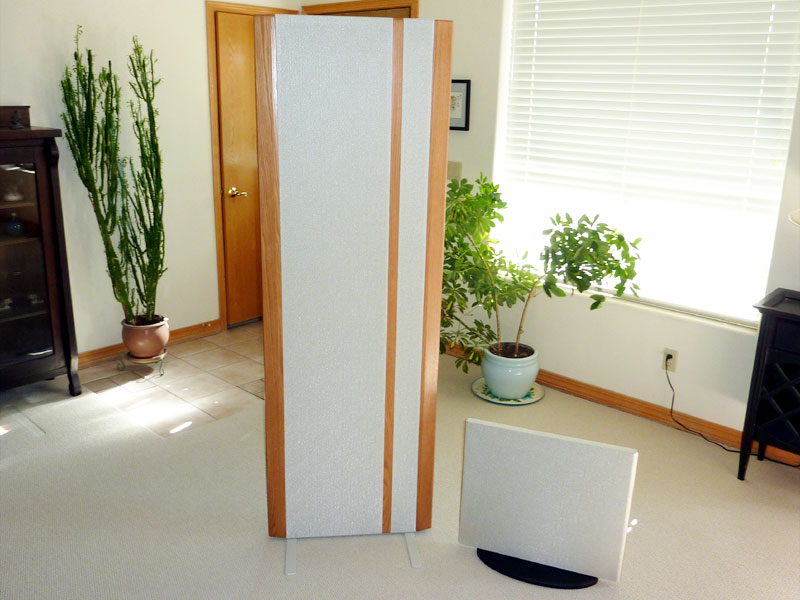
Magnepan DWM woofer panel
Listeners familiar with dipole speakers might agree that they can be tricky to position and that not all rooms seem amenable to supporting dipole bass. Recognising this potential problem Magnepan has created the DWM panel—a small, relatively light, deceptively high-output dipole woofer that can be used singly or in pairs to supplement the bass output of any of Magnepan’s speakers. Unlike the 3.7i itself, the DWM uses a double-sided magnet structure (that is, with opposing front/back magnet arrays) whose design is derived from the bass/midrange panel used in the firm’s flagship 20.7 loudspeaker.
DWMs are designed with dual, interlaced sets of ‘voice coils’ so that the DWM can be run either as a two-channel or single-channel woofer. When measured in isolation, the DWM’s bass extends only to about 40Hz, but when coupled with larger Magnepans an interesting phenomenon occurs; specifically, the low-frequency outputs of the DWM and of the main speaker couple with and reinforce one another such that bass response extends considerably lower than either unit used individually. Just as importantly, the DWM is perfectly voice-matched to the larger Magnepans and is likewise a dipole radiator.
I wound up using two DWMs with our 3.7i’s, using beefy Magnepan-supplied 1400 mH inductors to roll-off unwanted and unnecessary mid-bass, while taking advantage of the extra low-bass power and extension the DWMs provided. The results were well and truly spectacular, yielding very low-frequency (think mid-20Hz) weight and authority, yet without muddying the inherently transparent sound of the 3.7i in any way.
To my way of thinking, the 3.7i is easily one of the greatest performers I’ve yet heard in its price class—in large part because it does so many things right and so few things wrong. True, the 3.7i needs quite a bit of space and a lot of power to give of its best, but meet those requirements and the Maggies will serve up the sorts of rich, rare, and refined listening experiences typically associated with loudspeakers several times their price.
แผงวูฟเฟอร์ DWM ของ Magnepan
ผู้ฟังที่คุ้นเคยกับลำโพงไดโพลอาจเห็นด้วยว่าการจัดวางตำแหน่งลำโพงอาจทำได้ยาก และดูเหมือนว่าไม่ใช่ทุกห้องที่จะรองรับเสียงเบสไดโพลได้ เมื่อตระหนักถึงปัญหาที่อาจเกิดขึ้นนี้ Magnepan จึงได้สร้างแผง DWM ขึ้นมา ซึ่งเป็นวูฟเฟอร์ไดโพลขนาดเล็ก น้ำหนักเบา และมีเอาต์พุตสูงที่หลอกตา ซึ่งสามารถใช้เดี่ยวๆ หรือเป็นคู่เพื่อเสริมเอาต์พุตเบสของลำโพง Magnepan ใดๆ ก็ได้ ต่างจากรุ่น 3.7i เอง DWM ใช้โครงสร้างแม่เหล็กสองด้าน (กล่าวคือ มีอาร์เรย์แม่เหล็กด้านหน้า/ด้านหลังที่ตรงกันข้ามกัน) ซึ่งการออกแบบได้มาจากแผงเบส/เสียงกลางที่ใช้ในลำโพง 20.7 รุ่นเรือธงของบริษัท
DWM ได้รับการออกแบบด้วยชุดคอยล์เสียงแบบคู่ที่สลับกันเพื่อให้ DWM สามารถทำงานได้ทั้งแบบวูฟเฟอร์สองช่องหรือช่องเดียว เมื่อวัดแบบแยกกัน เสียงเบสของ DWM จะขยายได้เพียงประมาณ 40 เฮิรตซ์เท่านั้น แต่เมื่อจับคู่กับ Magnepans ขนาดใหญ่ขึ้น จะเกิดปรากฏการณ์ที่น่าสนใจขึ้น กล่าวคือ เอาต์พุตความถี่ต่ำของ DWM และลำโพงหลักจะจับคู่และเสริมซึ่งกันและกัน ทำให้การตอบสนองเสียงเบสขยายได้ต่ำกว่าหน่วยใดหน่วยหนึ่งที่ใช้แยกกันอย่างมาก ที่สำคัญไม่แพ้กันคือ DWM จับคู่เสียงกับ Magnepans ขนาดใหญ่ได้อย่างสมบูรณ์แบบ และยังเป็นเรดิเอเตอร์ไดโพลอีกด้วย
ฉันลงเอยด้วยการใช้ DWM สองตัวกับ 3.7i ของเรา โดยใช้ตัวเหนี่ยวนำ 1400 mH ที่ Magnepan จัดหามาให้เพื่อขจัดเสียงเบสกลางที่ไม่ต้องการและไม่จำเป็นออกไป ในขณะที่ใช้ประโยชน์จากพลังเสียงเบสต่ำพิเศษและการขยายเสียงที่ DWM มอบให้ ผลลัพธ์ที่ได้นั้นยอดเยี่ยมอย่างแท้จริง โดยให้น้ำหนักและความน่าเชื่อถือสำหรับความถี่ต่ำมาก (ลองนึกถึงกลาง 20Hz) แต่ไม่ทำให้เสียงที่ใสโดยธรรมชาติของ 3.7i ขุ่นมัวแต่อย่างใด
ในความคิดของฉัน 3.7i ถือเป็นหนึ่งในลำโพงที่มีประสิทธิภาพดีที่สุดเท่าที่ฉันเคยได้ยินมาในระดับราคาเดียวกัน ส่วนหนึ่งเป็นเพราะลำโพงรุ่นนี้ทำได้หลายอย่างถูกต้องและทำได้ไม่กี่อย่างผิด จริงอยู่ที่ 3.7i ต้องใช้พื้นที่และกำลังขับมากพอสมควรจึงจะมอบประสิทธิภาพที่ดีที่สุดได้ แต่ถ้าตอบสนองความต้องการเหล่านี้ ลำโพง Maggies จะให้ประสบการณ์การฟังที่เต็มอิ่ม หายาก และล้ำสมัย ซึ่งมักพบในลำโพงที่ราคาสูงกว่าหลายเท่า
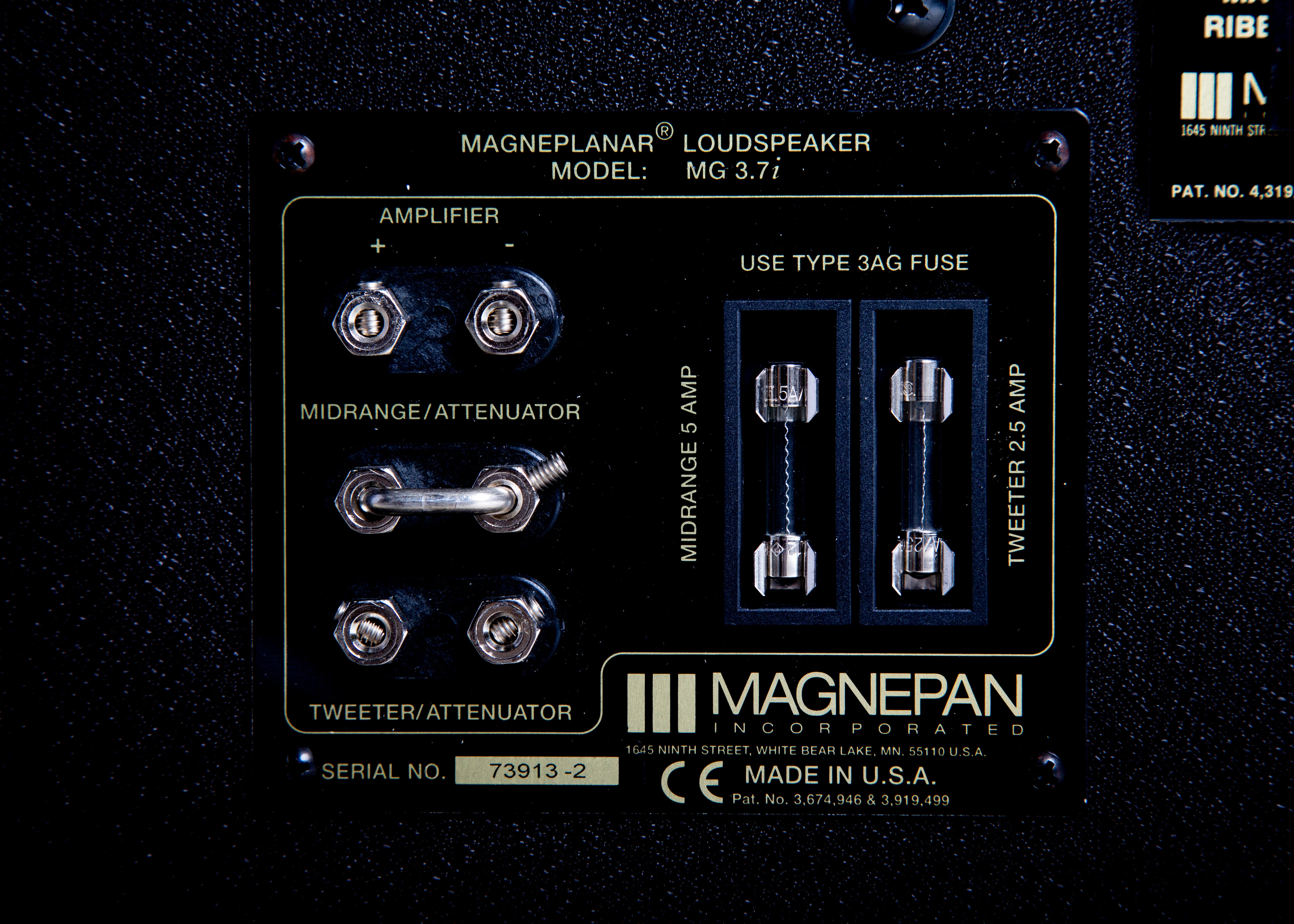
Magnepan MG3.7i X
หากต้องการข้อมูลเพิ่มเติมเกี่ยวกับซีรีส์ ‘X’ โปรดคลิกที่นี่
คุณสามารถดูรายชื่อตัวแทนจำหน่ายทั้งหมดได้โดยคลิกที่นี่

![[Mod_ Magnepan 3.7I-STD] Magnepan 3.7I-STD](https://www.save-av.com/wp-content/uploads/2025/03/Mod_-Magnepan-3.7I-STD-Magnepan-3.7I-STD.jpg)

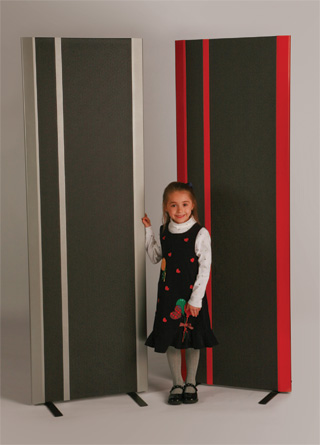
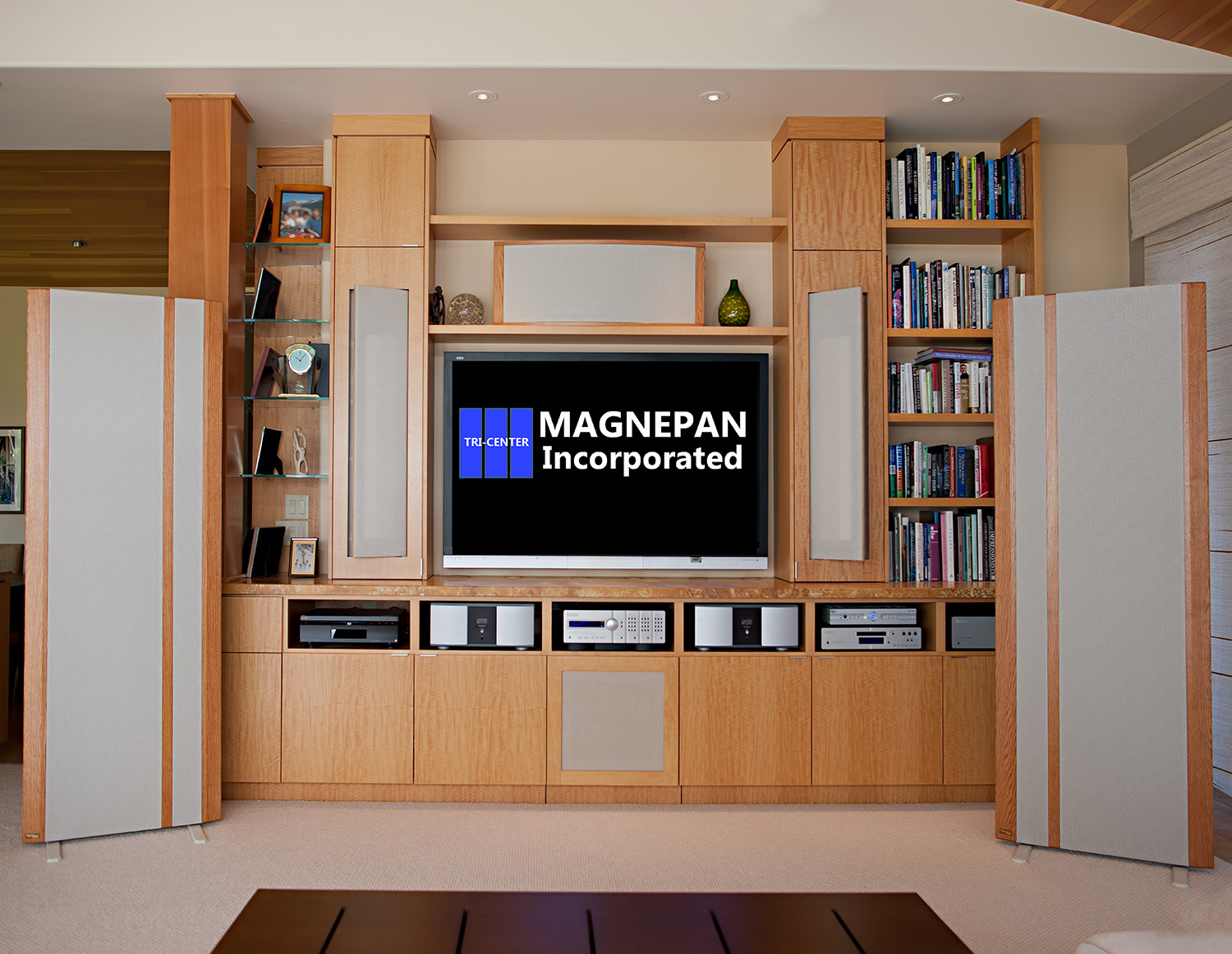
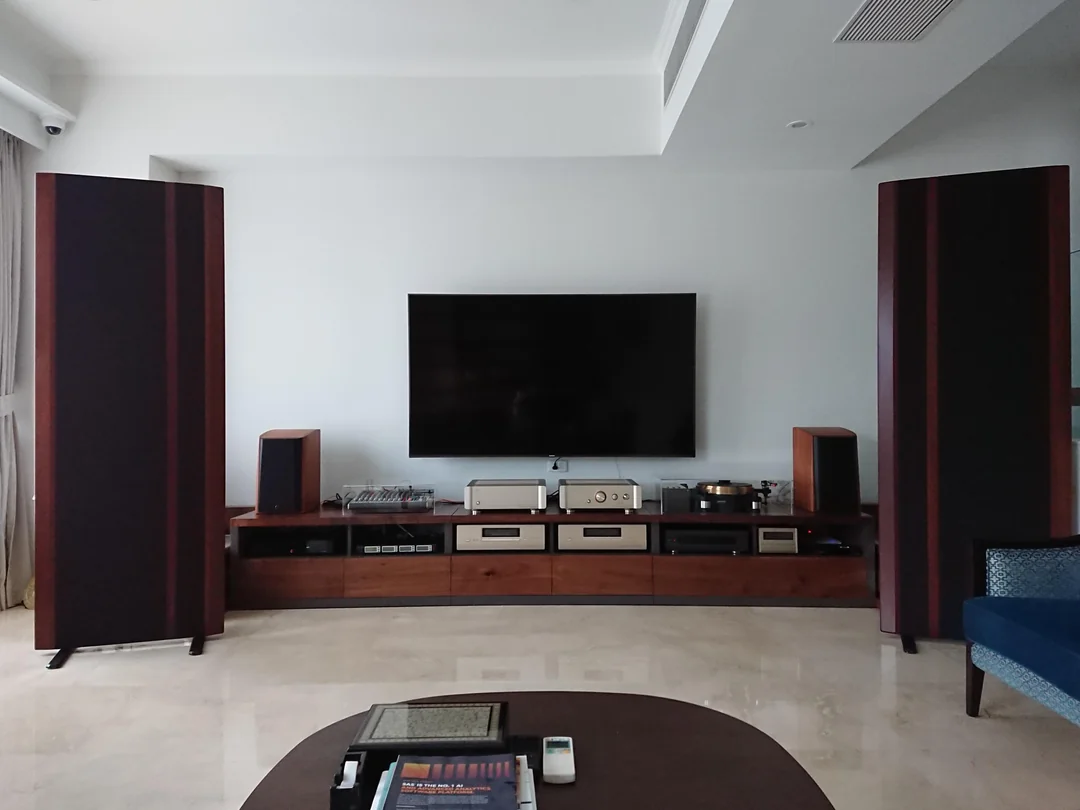
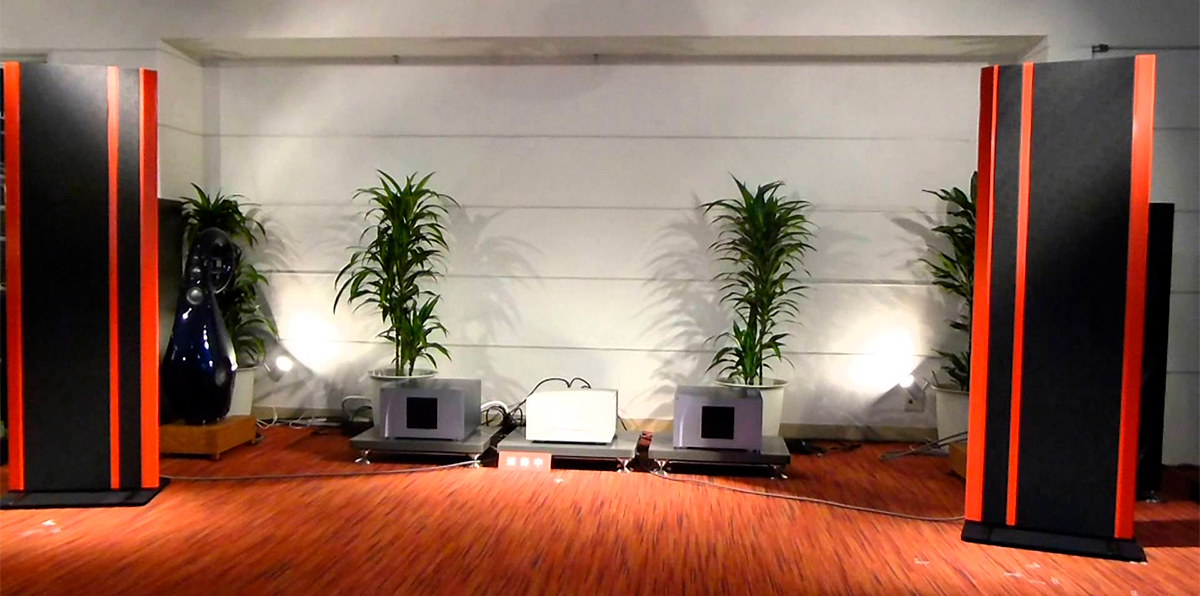
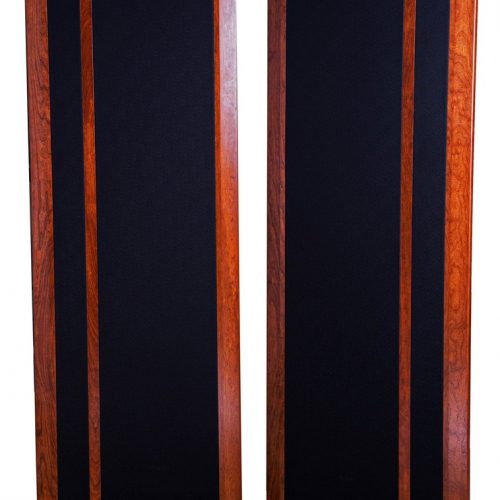



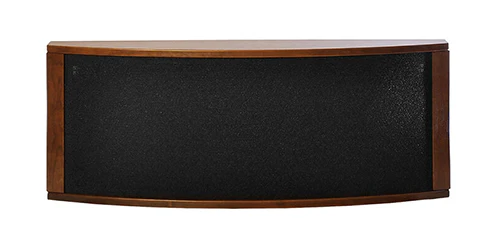
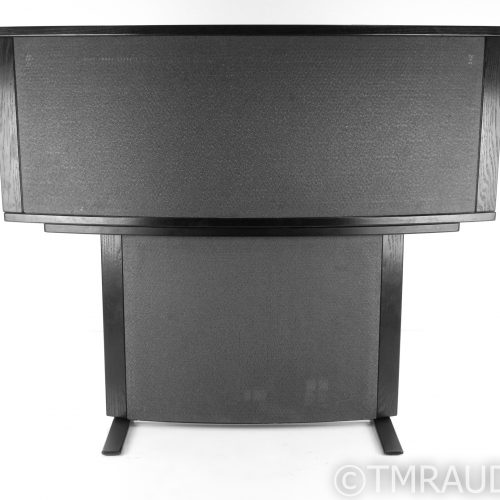
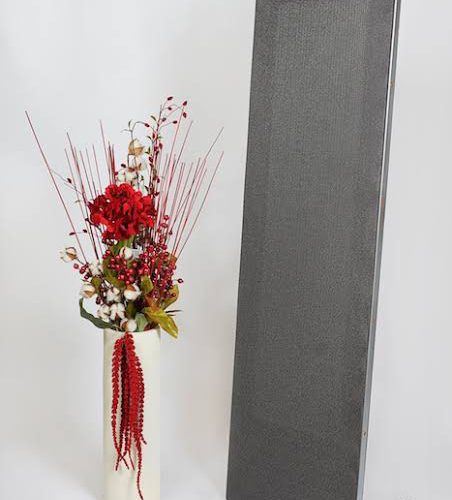
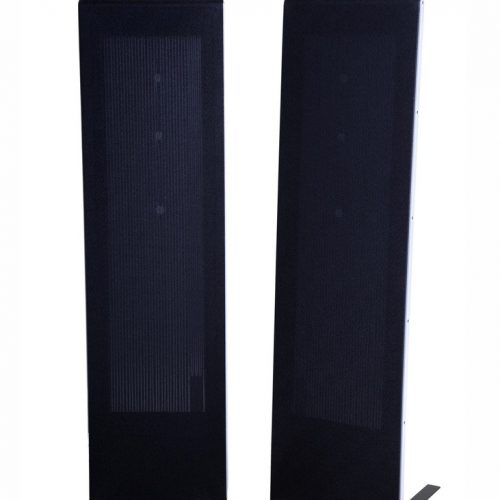
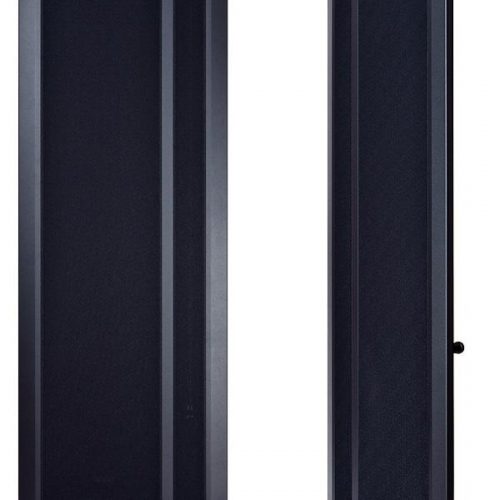
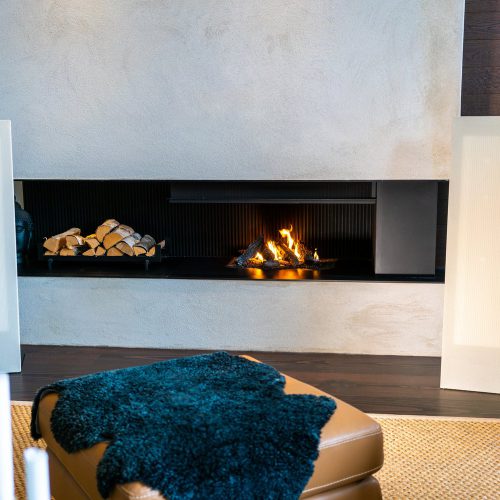
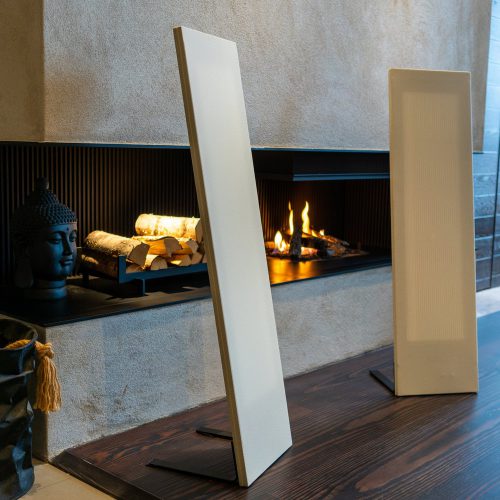
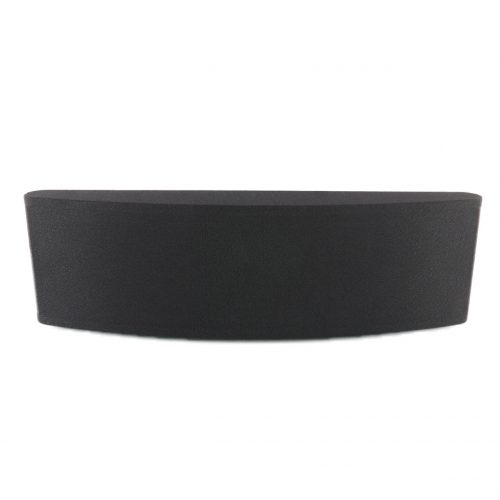
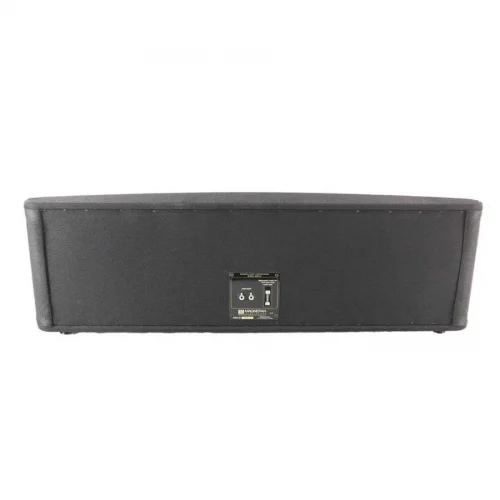
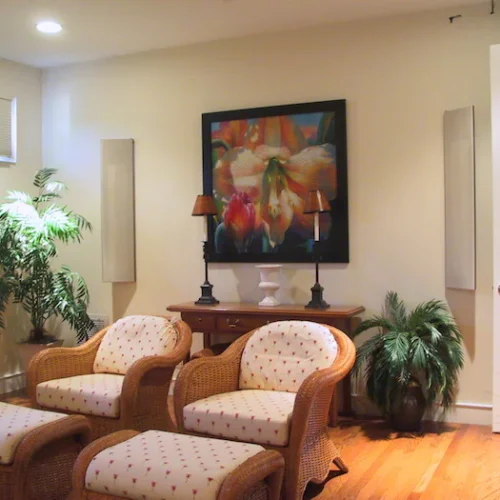
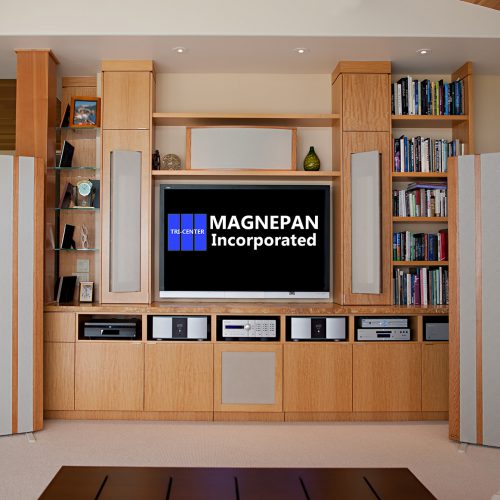
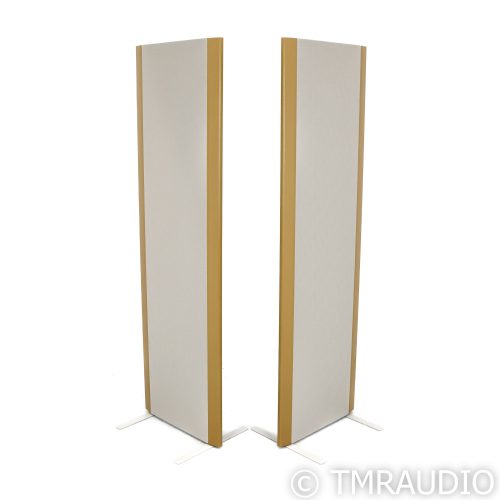

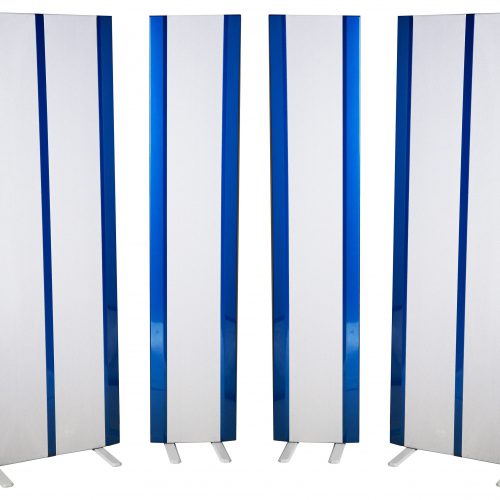


รีวิว
ยังไม่มีบทวิจารณ์